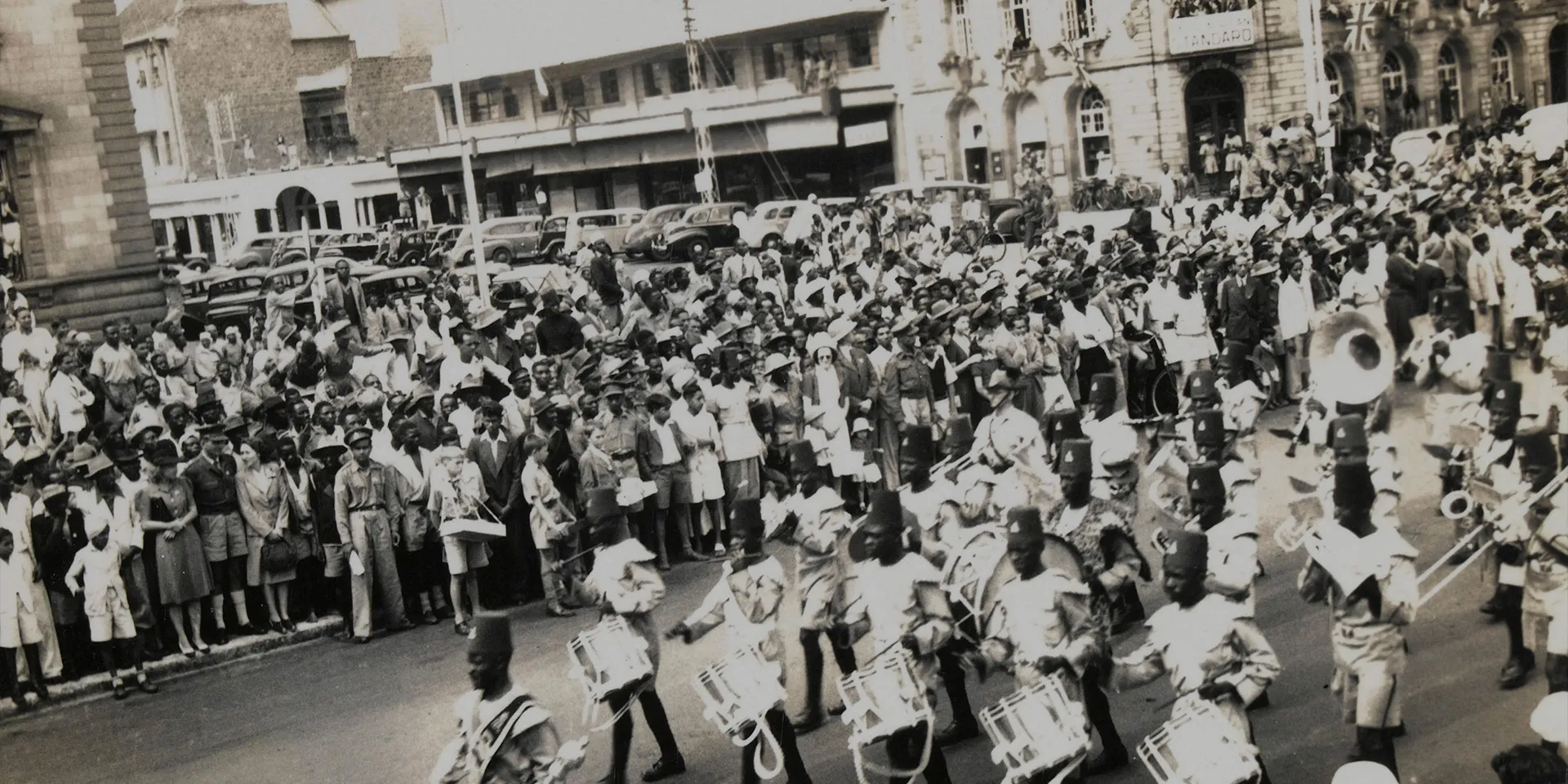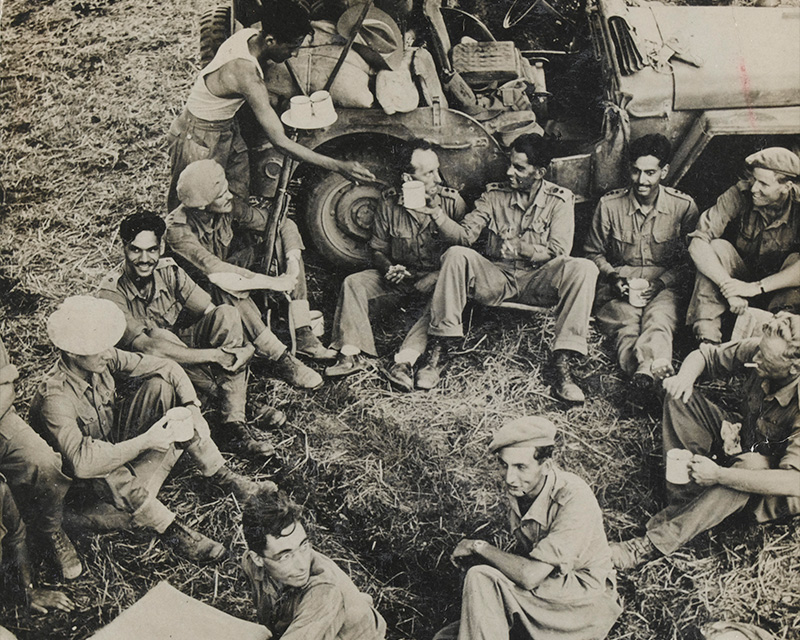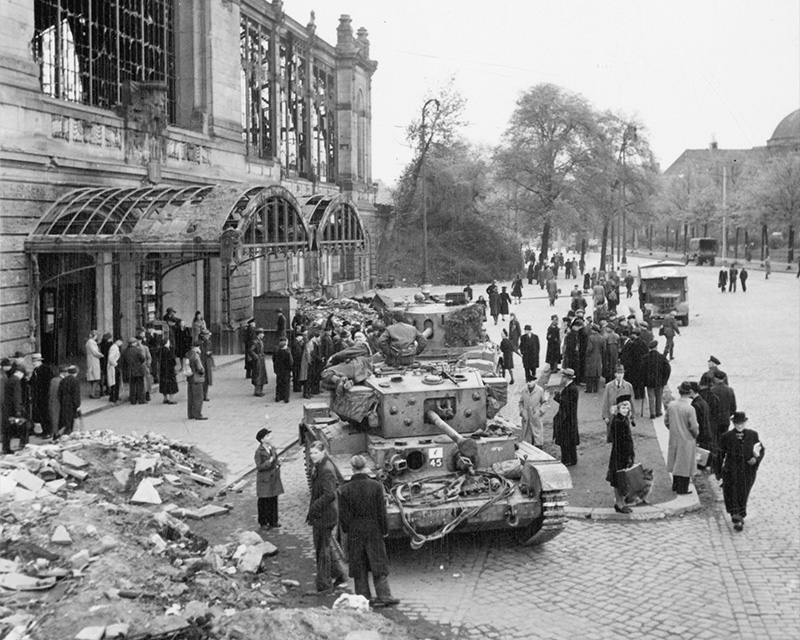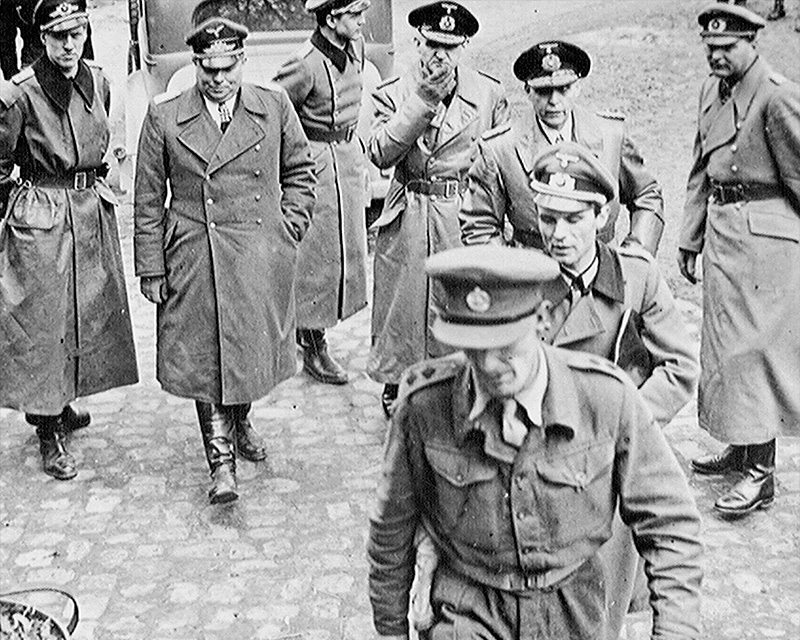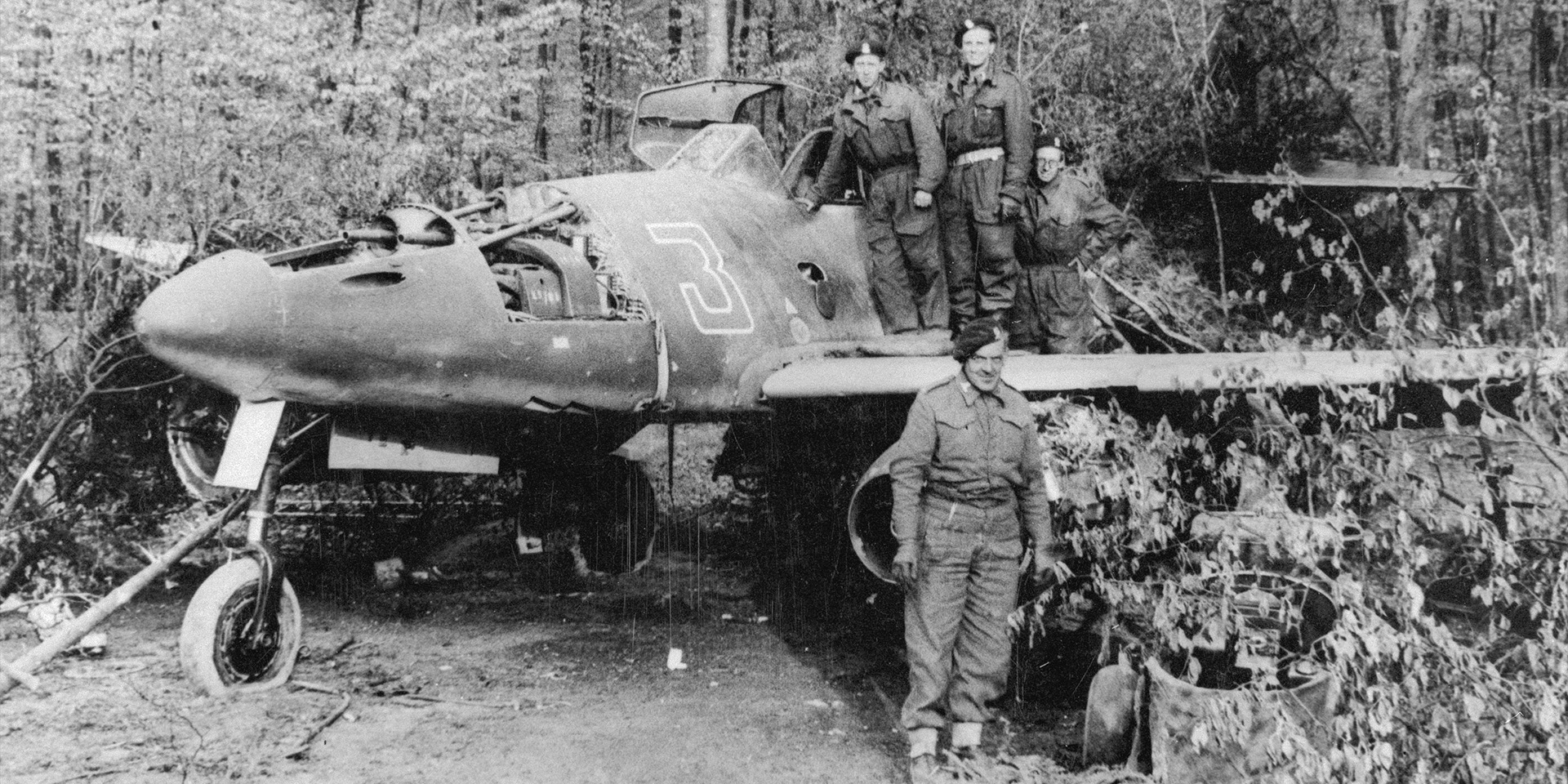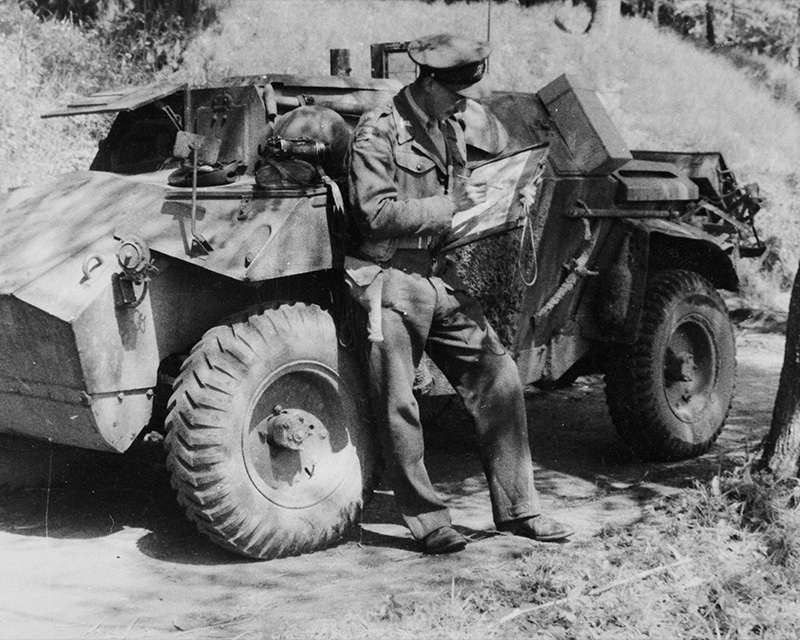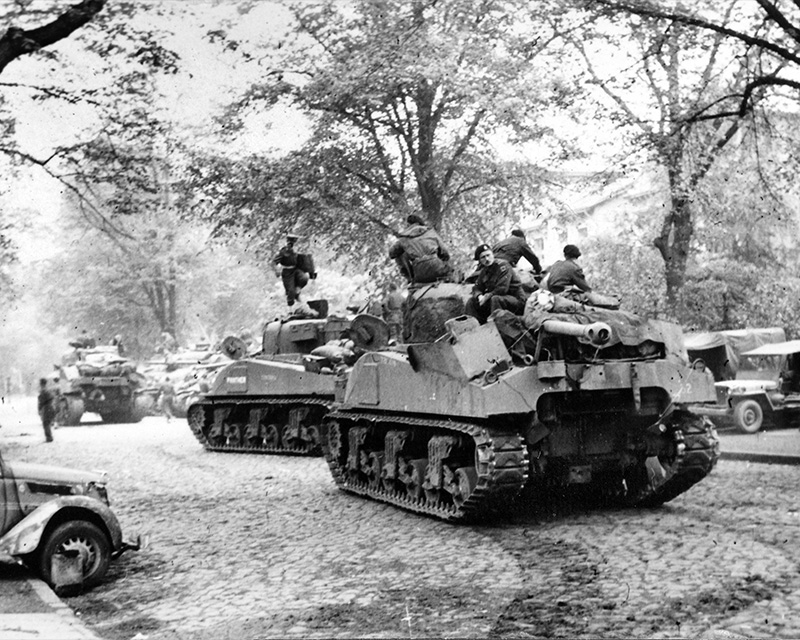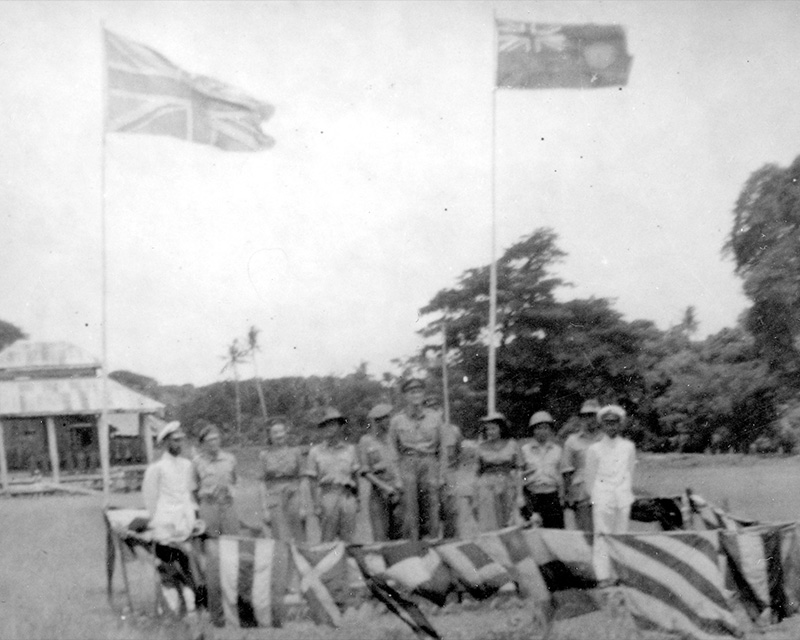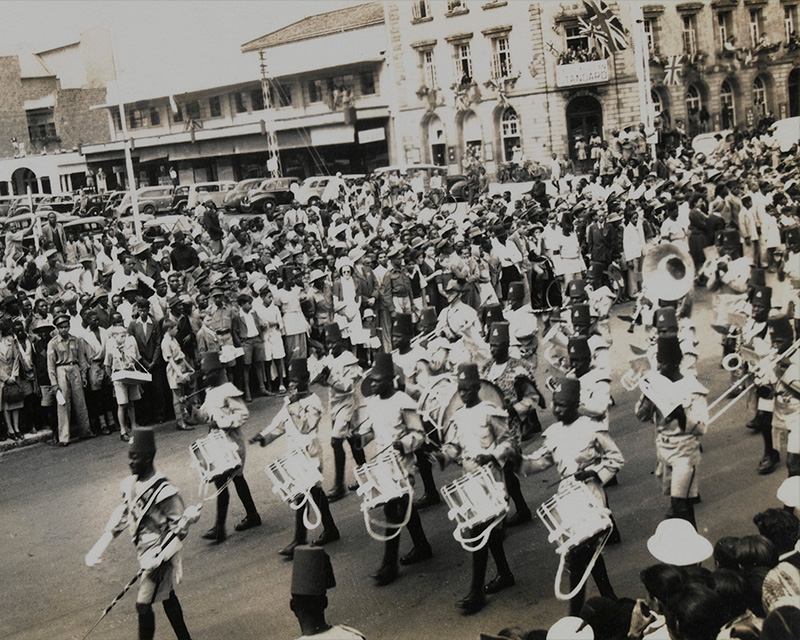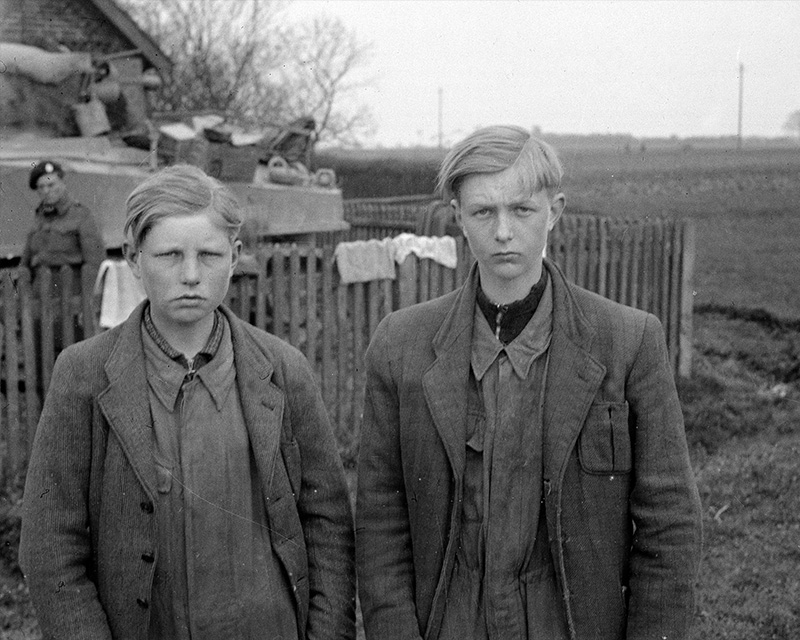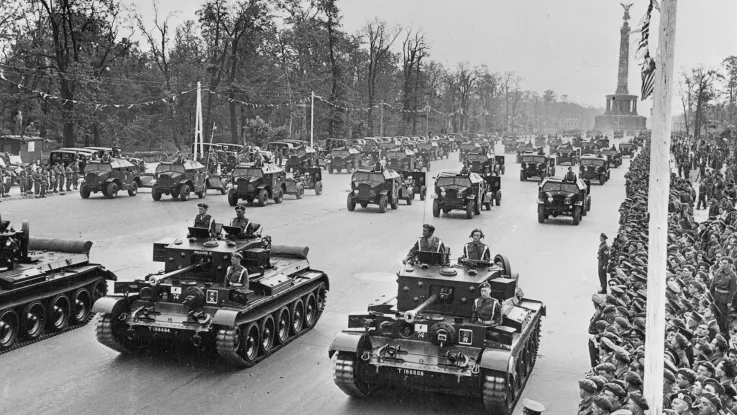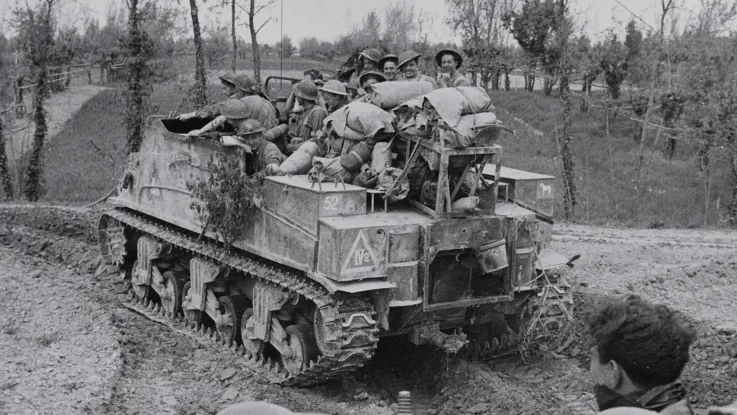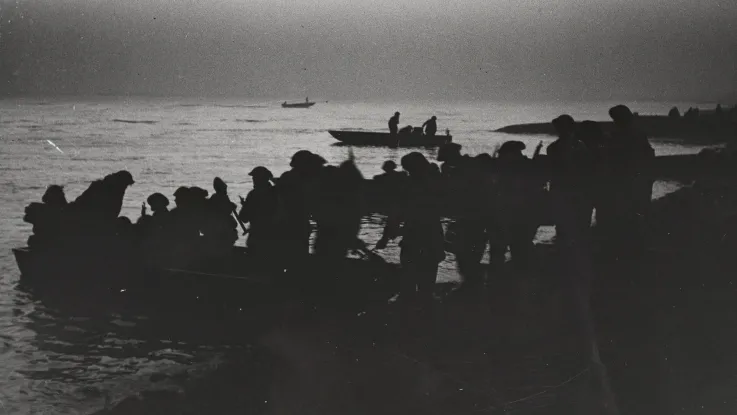State of affairs
In early May 1945, the Allies accepted the unconditional surrender of Germany, and 8 May was declared Victory in Europe Day (VE Day).
After six years of war, this extraordinary achievement was greeted with jubilant celebrations across the world: British and Imperial soldiers joined in the revelry from Iceland to Nairobi. For many, however, it inspired a sense of relief as much as one of joy, and thoughts often turned to home or to comrades who had lost their lives.
There was also no escaping the complex trials and tribulations that lay ahead. Soon, many millions of British soldiers would return to ‘civvy street’. It was obvious that the process of demobilisation would prove a major challenge, especially considering the postwar recession and mass unemployment that had followed the First World War.
There were plenty of problems abroad, too. In Germany, the staggering extent of wartime destruction was only now becoming clear. Tensions with the Soviet Union were growing more marked by the day. And, most unexpectedly, unrest in Syria at the end of the month threatened an outbreak of fighting between British and French troops.
Above all, there was still a war to be won in the East. In Burma (now Myanmar), VE Day celebrations were tempered by the ongoing fighting against the Japanese. Facing stiff enemy resistance and challenging monsoon conditions, British and Indian forces finally took the capital Rangoon (now Yangon). But, even with most of Burma recaptured, there remained the prospect of a final campaign to conquer Japan itself.
Indian troops take Pegu
On 1 May, after several days of fighting in terrible weather conditions, Japanese forces withdrew from Pegu (now Bago) in Burma. Pictured above are officers of the 10th Baluch Regiment shortly after the city's capture.
This was a significant victory for the Indian Army, and came just in the nick of time. Soon afterwards, tremendous monsoon flooding put Allied supply lines under severe stress, with some soldiers placed on half rations.
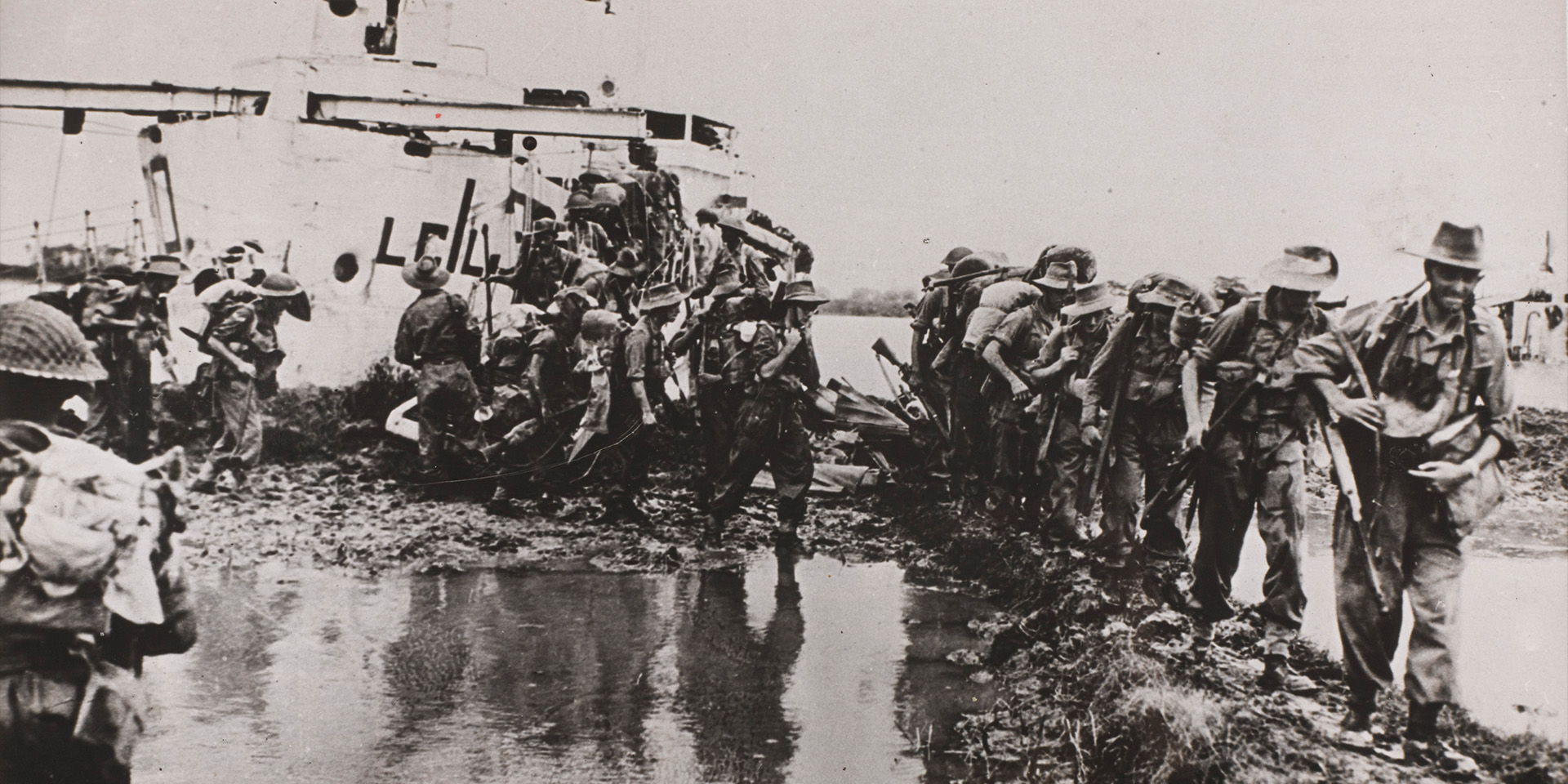
Operation Dracula
During April 1945, the British Fourteenth Army had advanced to within 40 miles (64km) of Rangoon (now Yangon) but soon found themselves bogged down in the face of stiff Japanese resistance.
On 1 May, a large force of British and Indian soldiers attempted to push on and finally capture the Burmese capital. Over 50,000 troops, as well as a 5,000-strong Gurkha parachute battalion, embarked upon Operation Dracula, an amphibious attack on Elephant Point just south of Rangoon. Their efforts secured the city the following day.
A path to independence
With the reconquest of Burma almost complete, Britain now had to consider the future status of its former colony.
A government paper issued on 17 May proposed an end to British imperial rule of the country and laid out a path to dominion status within the Commonwealth. However, the leader of Burma's Anti-Fascist People's Freedom League, General Aung San, rejected the proposal.
After further negotiations, this ultimately led to Britain recognising Burma as an independent state outside the Commonwealth in January 1948.
‘Now that Rangoon has fallen, I would like to send you my thanks and congratulations on the excellent work which the Army Air Transport Organisation has done throughout our long advance. Your organisation has functioned admirably in spite of many difficulties, including frequent changes of plan, and its efficiency reflects great credit on your staff and on all concerned.’Lieutenant General Sir Oliver Leese to Lieutenant Colonel Thomas Newman, Royal Indian Army Service Corps — 5 May 1945
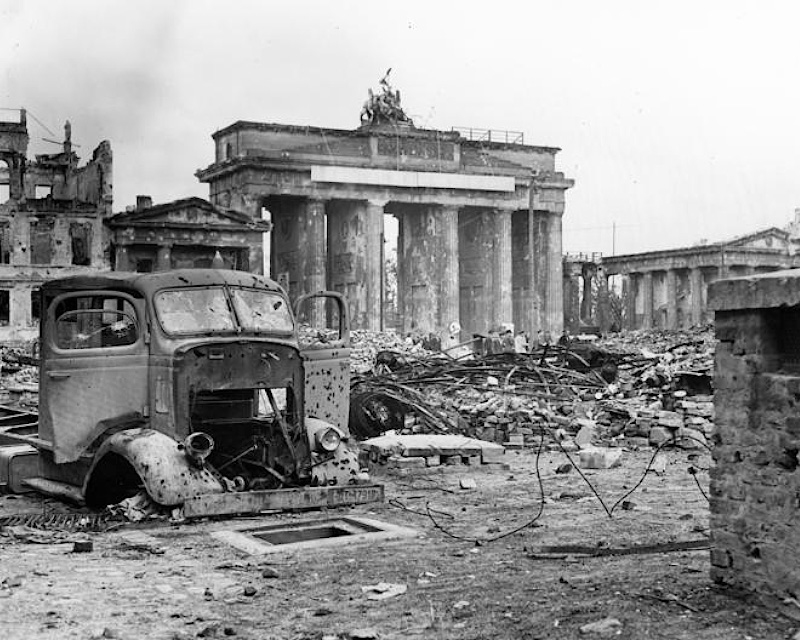
(Bundesarchiv, B 145 Bild-P054320 / CC-BY-SA 3.0)
Fall of Berlin
On 2 May, the German garrison in Berlin surrendered to Soviet and Polish troops. The battered remnants of the Brandenburg Gate are pictured above.
The capture of Germany’s capital city – and the famous image of a Soviet flag flying over the Reichstag building – came to symbolise the defeat of the Third Reich.
A temporary German government is formed
2 May 1945
Following the suicide of Adolf Hitler, leadership of the German state officially passed to Grand Admiral Karl Dönitz.
From his base in Flensburg, Dönitz headed up a rump government of the areas of Germany yet to come under Allied control. Within just a few days, after Germany’s final surrender, the Flensburg government would effectively cease to function.
War in Italy ends
At noon on 2 May, hostilities on the Italian front officially ceased.
‘Soldiers, sailors and airmen of the Allied Forces in the Mediterranean Theatre. After nearly two years of hard and continuous fighting which started in Sicily in the summer of 1943, you stand today as victors of the Italian campaign. You have won a victory which has ended in the complete and utter rout of the German armed forces in the Mediterranean. By clearing Italy of the last Nazi aggressor, you have liberated a country of over 40,000,000 people.’Special Order of the Day, Field Marshal Harold Alexander, Supreme Allied Commander, Mediterranean Theatre — 2 May 1945
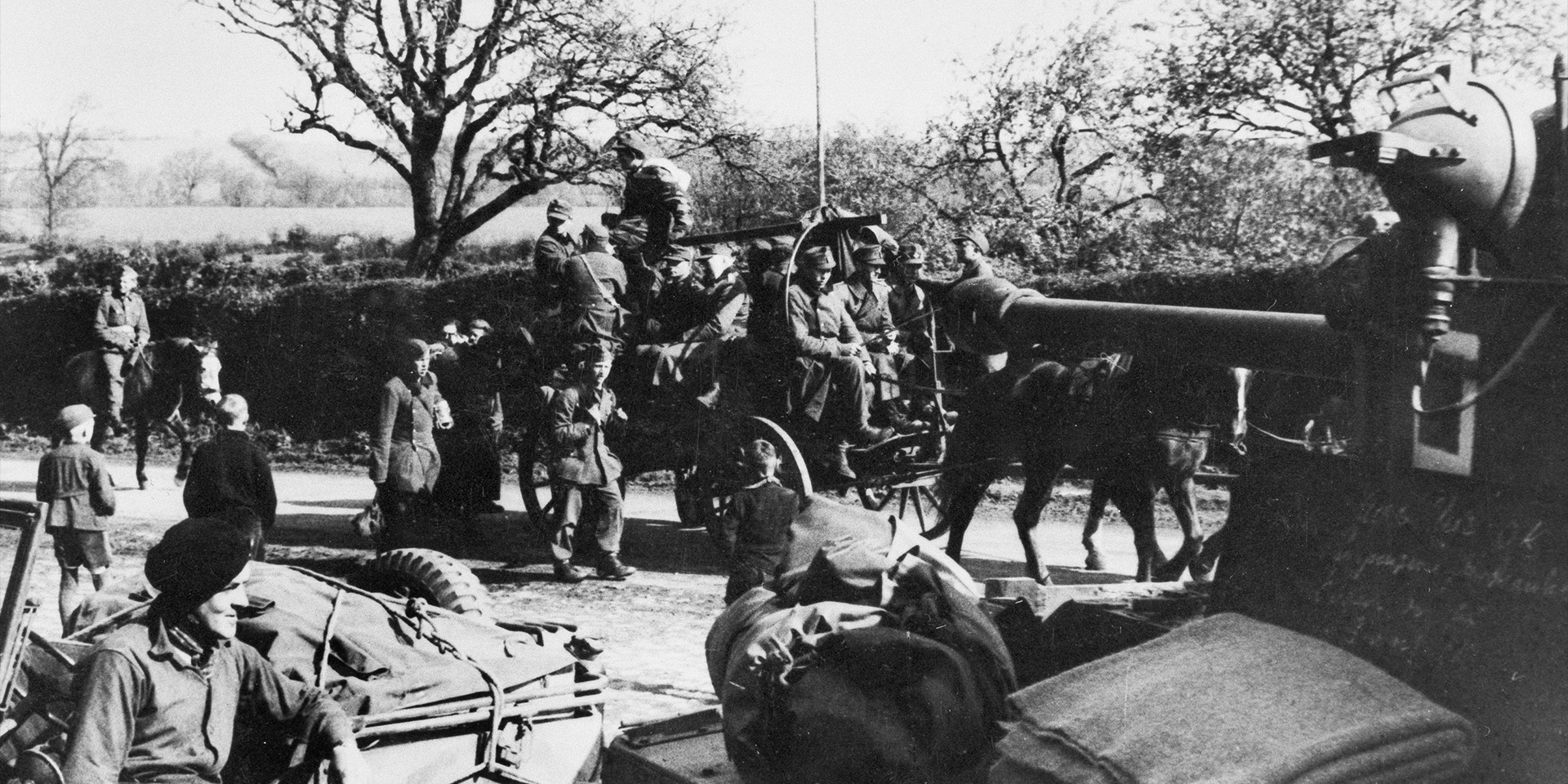
The German Army in the west collapses
In early May, hundreds of thousands of German soldiers surrendered to British and Allied forces. It was emblematic of the impending Allied victory, but this mass of prisoners of war (POWs) also posed a logistical challenge given the need to disarm, feed and accommodate them.
Here, German POWs are pictured near Bad Oldesloe on 3 May.
The British Army occupies Hamburg
After the surrender of the remaining German forces in Hamburg, the British Second Army occupied the city unopposed on 3 May.
In the first instance, soldiers were stationed at key locations, including major train stations (as pictured). The city was largely in ruins, but many surviving buildings were quickly requisitioned as billets for British troops.
‘Dear Mummy + Daddy, I expect you heard on the wireless the liberation of this camp by the Americans on Sunday 29th April. American tanks rolled into the camp about 12 o’clock Sunday morning + very soon the camp was covered with the flags of the Allied nations. I am very well + very impatient to get home. Will send a telegram or ring you up when I reach England. Give me love to everybody, love from Tim.’Letter from Lieutenant Timothy Hall to his parents, Stalag VII-A POW camp, Moosburg, Germany — 5 May 1945
T-Force and the hunt for German technology
Towards the end of the war, a secret joint unit of the British and US Armies, known as T-Force, scoured Germany for valuable technology.
These soldiers sought to capture intellectual and scientific assets, from experimental Nazi war machinery – like the jet fighter (pictured) – to individual German rocket scientists.
During the first months of the peace, T-Force continued its work and soon gained a controversial reputation for taking a heavy-handed approach. On occasion, this even included kidnapping.
‘The surrender of the German armed forces has opened up targets at an almost overwhelming pace. The two main areas, HAMBURG which had 104 listed targets, and KIEL with 150, are proving of great value despite the severe air raid damage. Their assessment and detailed investigation is expected to take some time.’T-Force intelligence summary — 2-10 May 1945
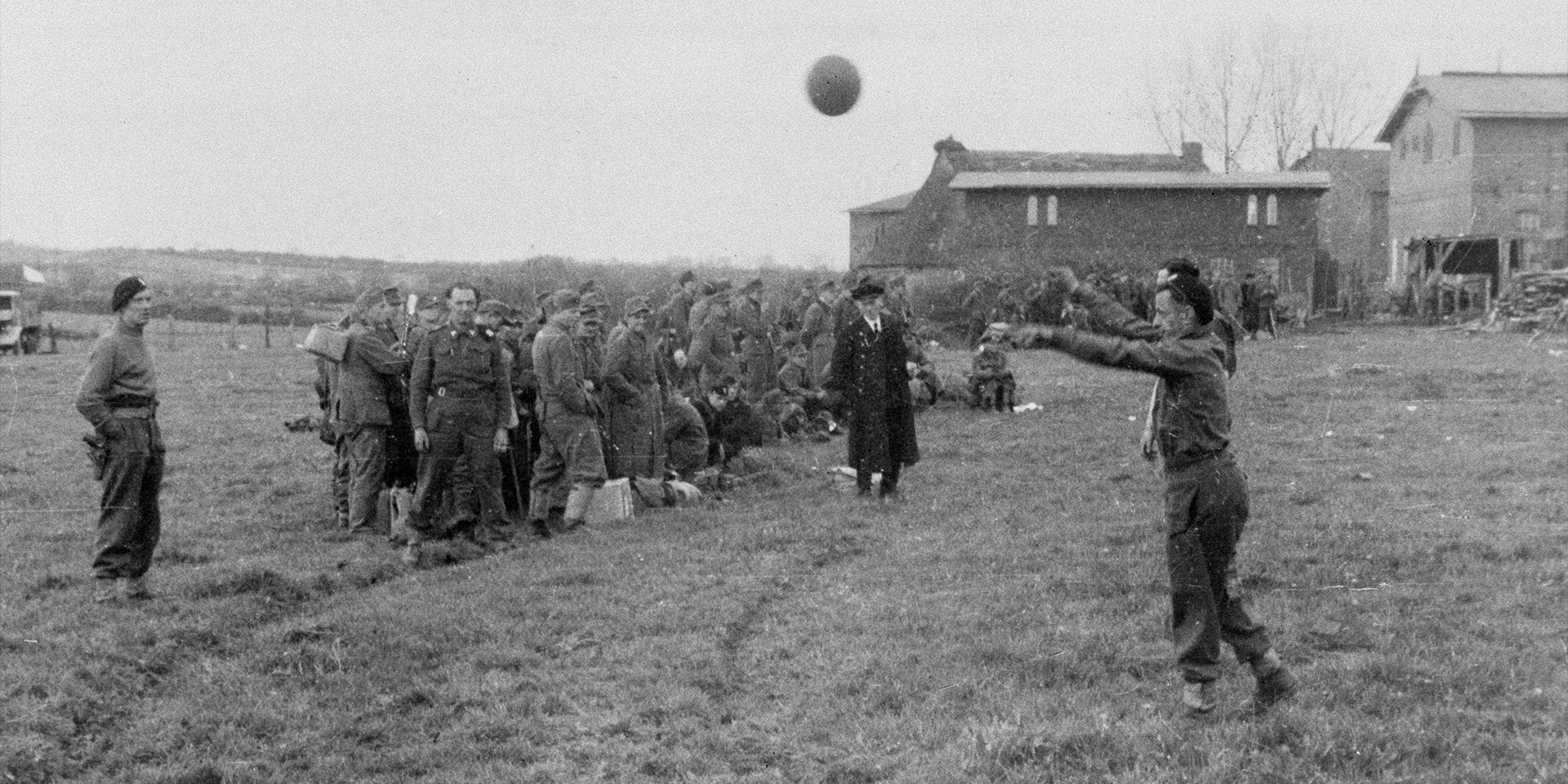
Time for a kickabout
With the fighting at an end, soldiers and civilians awaited the news that the war in Europe was officially over. Here, British troops are pictured enjoying a game of football on 7 May as German POWs watch from the sidelines.
In some cases, German civilians were invited to play football against their conquerors, even though this went against official non-fraternisation regulations.
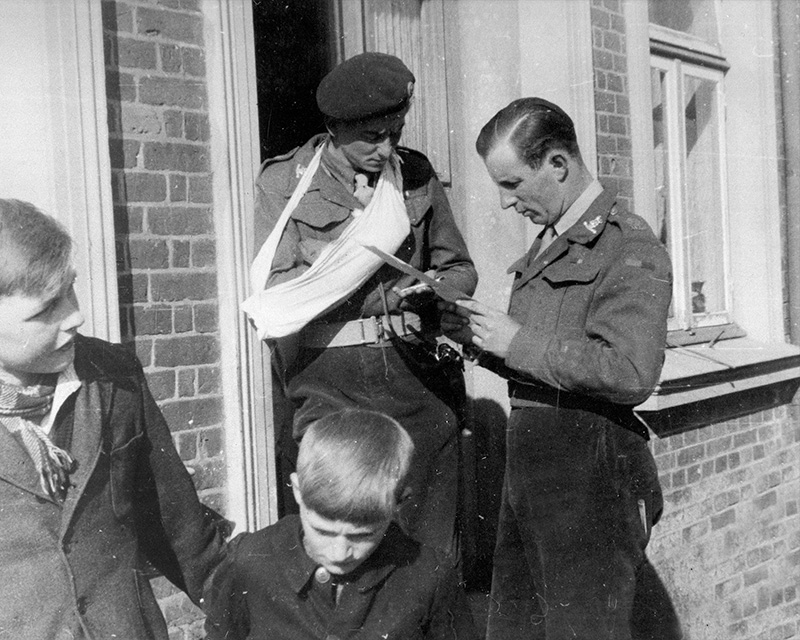
British soldiers receive ‘End of the War in Europe’ message
On 7 May, official messages – classified as secret – were sent out declaring the war in Europe to be over. The following day was declared as Victory in Europe Day and celebrations were to be held across the world.
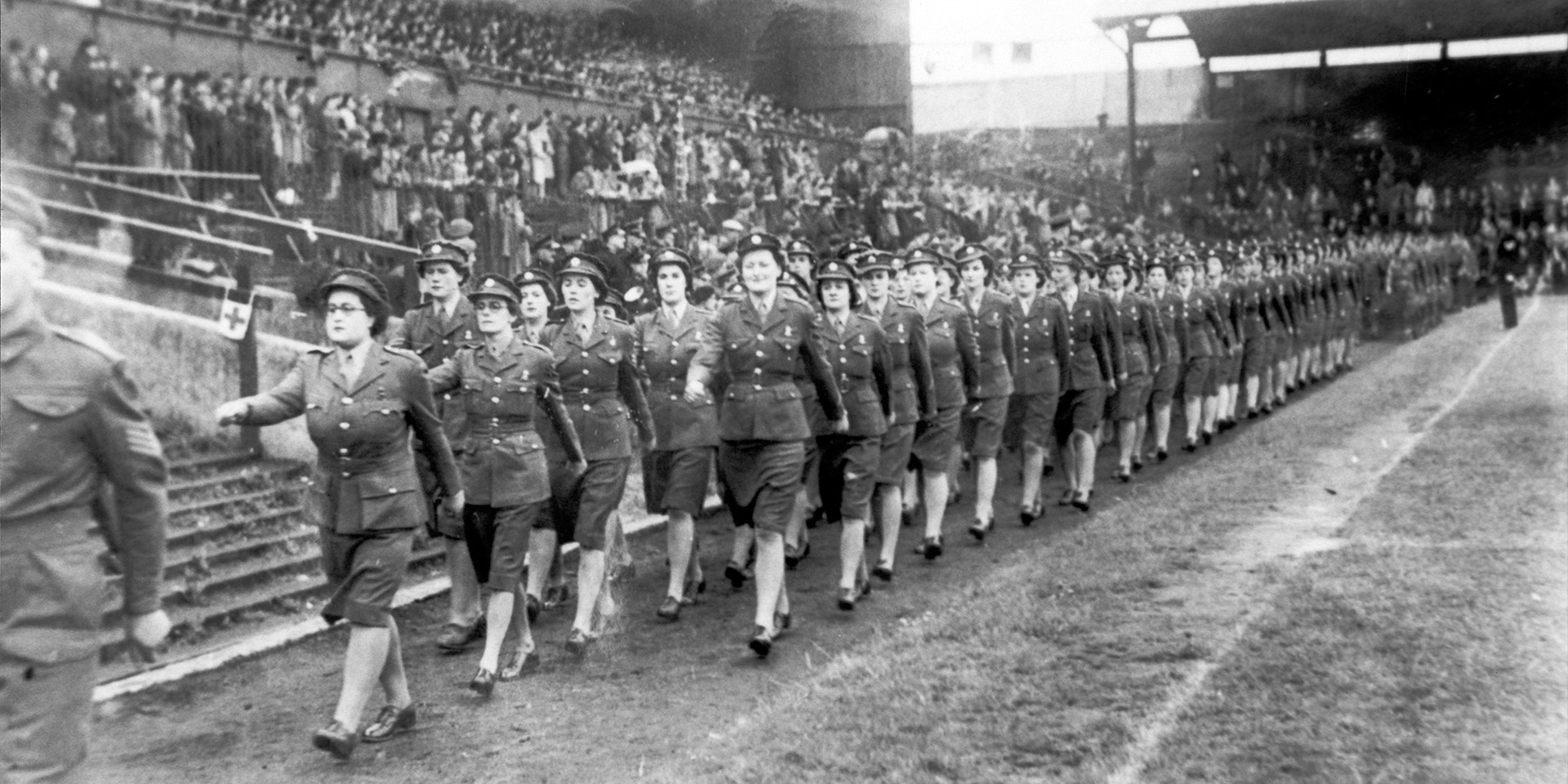
VE Day in the UK
8 May was declared a public holiday in the UK and celebrations were held nationwide. In central London, huge crowds flocked to Trafalgar Square and Buckingham Palace to dance the conga, sing patriotic songs and wave Union Jack flags.
In other towns and cities, victory parades, street parties and bonfires were common. Above, we see a group of ATS members marching during celebrations in Newcastle-upon-Tyne.
But not everyone was in jubilant mood. For some, it was a time of sorrow after the loss of loved ones in the fighting; others, anxious about the future, did little to mark the occasion.
‘Victory!! Thank God. What a day for England. I am longing to hear all about the celebrations. But now I must tell you how we reacted. I first heard the great news as I was passing another unit. This was about breakfast time. All through breakfast we talked little, I think everybody was trying to think what it really meant. Don’t be disappointed when I say that it was hard to feel elated.’Letter from Captain John Workman, stationed in Burma with the 5th Mahratta Anti Tank Regiment, to his wife — 12 May 1945
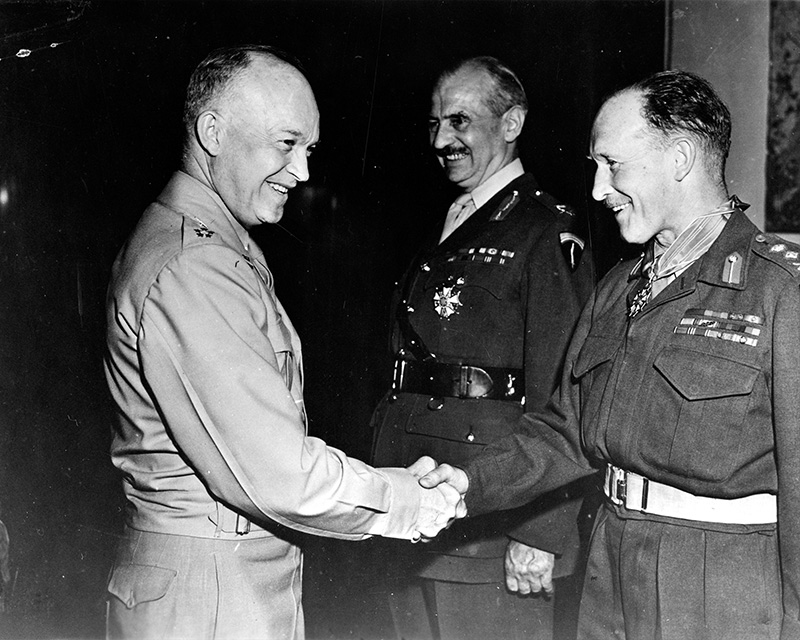
British forces in Norway
On 9 May, the British 1st Airborne Division became a police and military force in Norway as part of Operation Doomsday. Here, we see General Eisenhower’s visit to the garrison.
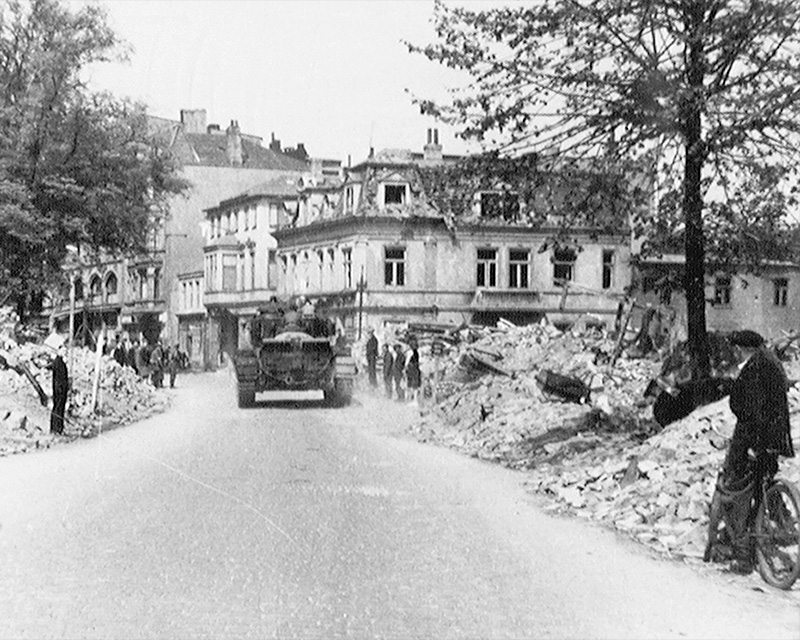
British troops occupy Germany
Following Germany’s unconditional surrender, British and Allied forces began to occupy towns and cities across the country. Above, we see British forces entering the town of Neumünster on 11 May.
In the north-west – the area of Germany which came under British control – the scale of bomb damage was unprecedented: every major city was more than 75 per cent destroyed.
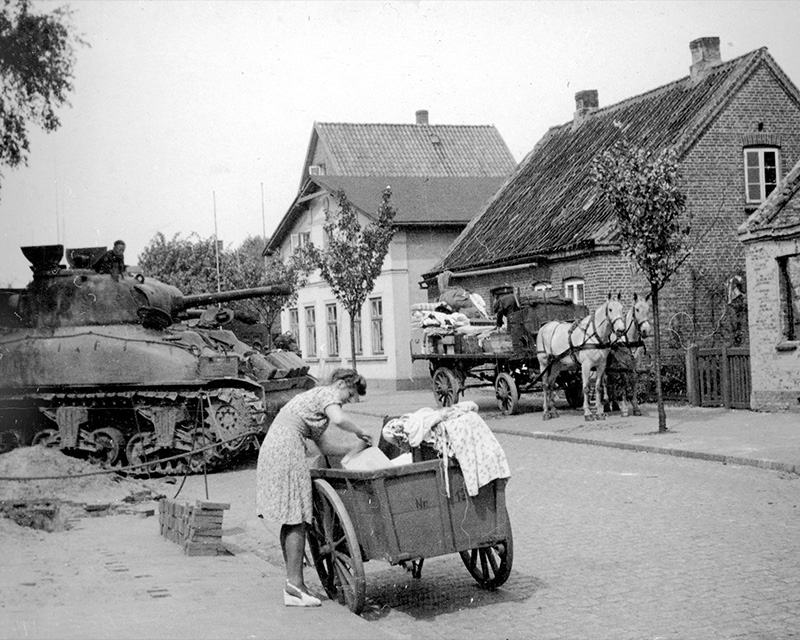
Requisitioning in Germany
To accommodate British soldiers and civilians stationed in Germany, the occupying forces requisitioned houses and buildings that were still intact.
After a brief period of irregular, impromptu action at the very end of the war, the British authorities soon established a formal process with strict regulations, forms and fixed compensation rates. However, the process remained controversial, exacerbating housing shortages and leaving many German civilians without adequate shelter.
Here, we see civilians evacuating their houses in Elmshorn, with a British tank looming in the background.
United Nations War Crimes Commission
With the war in Europe now over, the hunt began for the surviving leaders of the Third Reich. On 12 May, the United Nations War Crimes Commission indicted Hermann Göring and other members of the Nazi leadership who were still alive.
Pictured above is part of a telephone switchboard from Hitler’s former Supreme Command Headquarters in East Prussia (now in Poland). It features Göring's name alongside other prominent Nazis, including Heinrich Himmler, Alfred Jodl and Martin Bormann.
Demob plans
With most people still revelling in the victory, the Institute of Industrial Administration held a conference in mid-May to discuss plans for demobilisation.
It was clear to everyone that returning millions of men and women to civilian life – and civilian jobs – represented a monumental task. Memories of the mass unemployment that had followed the First World War added to the anxiety.
‘During these long and anxious years of war the youth of this country has been absorbed into the services, civil defence and essential war production. Now the whole vast machine has to be put into reverse, in two stages, and these men and women will have to be re-instated in civil life once more.’Report of the Conference on Management in Demobilisation, Institute of Industrial Administration — 11 May 1945
Churchill resigns
Also in mid-May, the Labour Party withdrew its support for Britain's wartime coalition government. Winston Churchill tendered his resignation as prime minister in preparation for a general election, but remained in post until the results were announced on 26 July.
‘We must never forget that beyond all lurks Japan, harassed and failing but still a people of a hundred millions… and we are bound by the ties of honour and fraternal loyalty to the United States to fight this great war at the other end of the world at their side without flagging or failing.’Prime Minister Winston Churchill in a radio address to the British people — 13 May 1945
German surrender on the Channel Islands
16 May 1945
The German occupation of the Channel Islands, which had begun in 1940, finally came to an end.
‘We have been hungry & cold… we were completely helpless and under the constant orders of the enemy - & always dreading some reprisals. However thank God the English Army [sic] have quickly cleared our Islands, & since 8th of May the flags of England & Jersey are flying in place of the Schwastika [sic].’A letter to Captain John Rybot, stationed in India, from a family member in his native Jersey — 28 May 1945
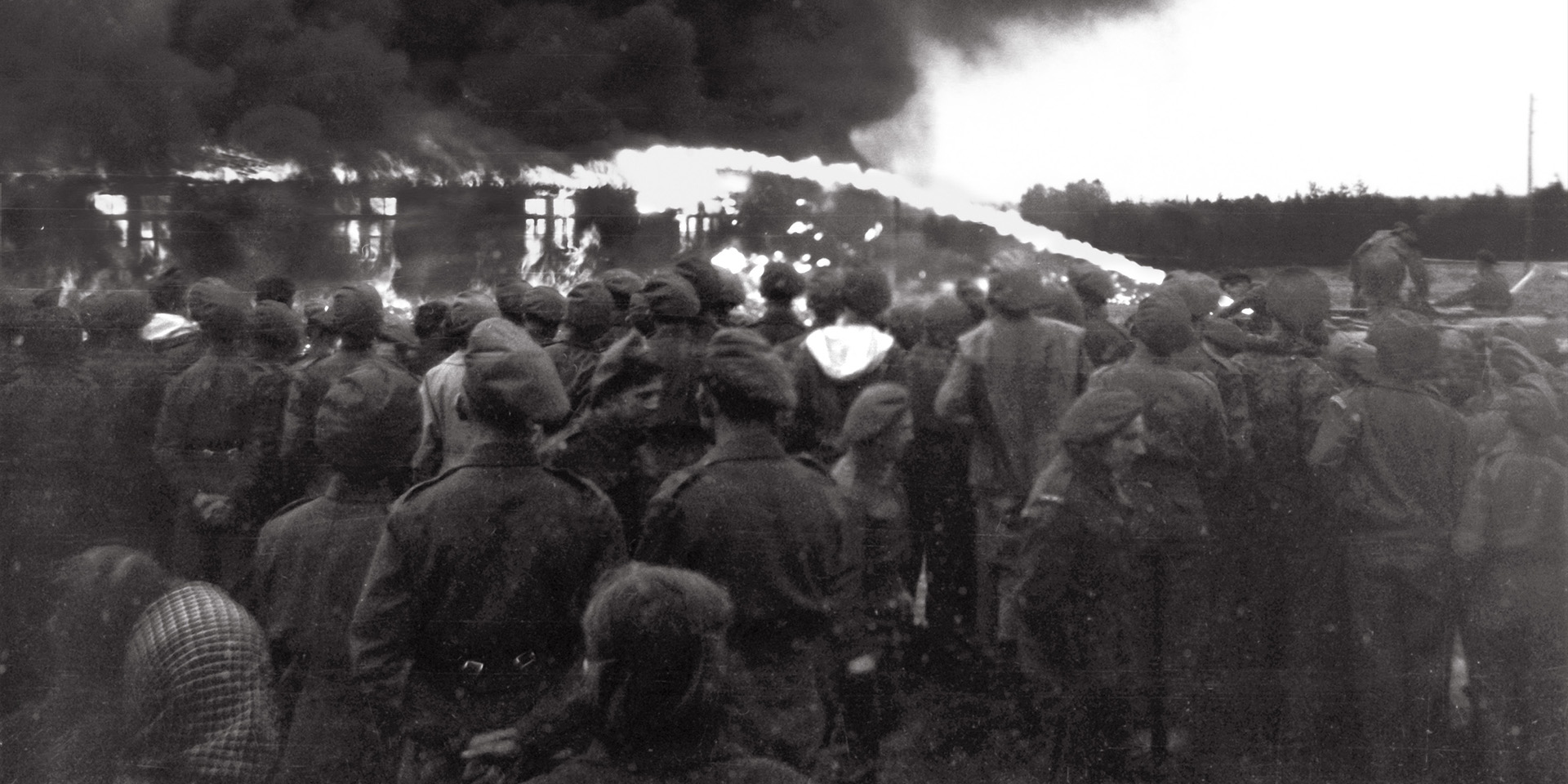
Survivors of Bergen-Belsen
In the weeks after the liberation of Bergen-Belsen, teams of British Army doctors, London medical students, Quaker relief teams and many other agencies helped Holocaust survivors there.
On 19 May, British forces oversaw the destruction of the huts at the concentration camp (pictured above) to help prevent the spread of disease.
Operation Unthinkable
On 22 May, Prime Minister Winston Churchill discussed Operation Unthinkable with Britain’s top military leaders. This top-secret prospective war plan proposed a surprise attack against the Soviet Union.
While it remained hypothetical – deemed ‘hazardous’ and never actually implemented – the plan's very existence illustrates the growing tensions between the wartime Allies at the end of the war in Europe.
Sexual violence
In these chaotic days and weeks, millions of German women became the victims of violence and sexual assault. Soldiers from all Allied nations – including members of the British Army – were among the transgressors, but the vast majority of these attacks occurred in areas under Soviet control.
‘We hid ourselves until these lorries had gone by and then went over to a house where a little girl was calling to us... After we had been here for about an hour in walked a Russian, very drunk, who would keep talking and the poor woman was scared stiff... Anyway he eventually went and we decided to go to bed. But we were to have another interruption. This time from a woman and her little kiddie. She had heard that we were here and wanted protection for the night. The women used to all congregate together at night for safety in numbers.’Sergeant Alec Shoosmith, 3rd County of London Yeomanry (Sharpshooters), recounting his attempt to return to British lines from a German prison camp in Soviet territory — 21 May 1945
Himmler commits suicide in British custody
23 May 1945
After Nazi leader Heinrich Himmler surrendered to British authorities, he was taken to the German city of Lüneburg for a medical inspection prior to interrogation.
While answering questions from his captors, Himmler swallowed a deadly cyanide pill concealed in his mouth. He died immediately.
‘[W]e saw Lancasters awaiting us, flown by R.A.F. fellows and I must say they gave us a very good welcome. After getting airborne the rear gunner let us listen to the football cup final which was very good... After about two hours flying we landed at a drome at Dunsfold in Sussex… Upon landing we were de-loused again and then went into a hangar where Red Cross nurses waited on us and we had tea... After leaving my kit at home I went to meet the most important person of all, Peggy, my wife. I met her at King’s Cross and I am afraid I didn’t know what to do. I felt like crying, but didn’t, and instead we kissed... I will be going into civvy street again very soon and I won’t be sorry, although it may be difficult. But with the help of Peggy, it will be much easier. God bless her.’Sergeant Alec Shoosmith, 3rd County of London Yeomanry (Sharpshooters) returning home to London after his time in captivity in Germany — 23 May 1945
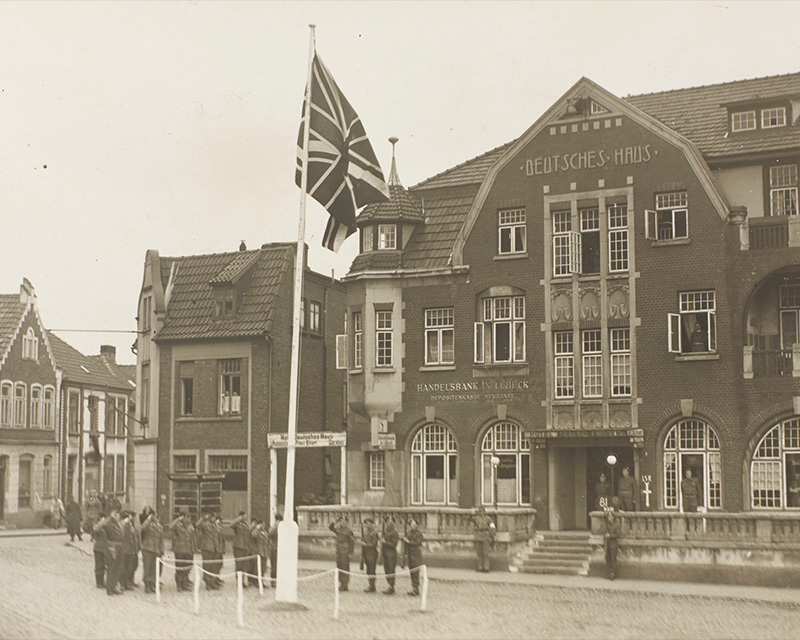
Allied Military Government of Germany
The Allies began to establish a military government across Germany. In most places, curfews were enforced, weapons and radios confiscated, and strict military regulations put into place.
British soldiers and German prisoners of war are shown above saluting the British flag in Oldenburg, Germany.
Suspected werewolves
In the aftermath of victory, British soldiers were warned about the dangers of so-called 'werewolves' – devoted Nazi guerrilla fighters, expected to sabotage the Allied occupiers following the collapse of the Third Reich.
While the danger they posed was hugely exaggerated, there were some isolated instances of attacks on occupation troops. Above are two young suspects captured at Asendorf in Lower Saxony.
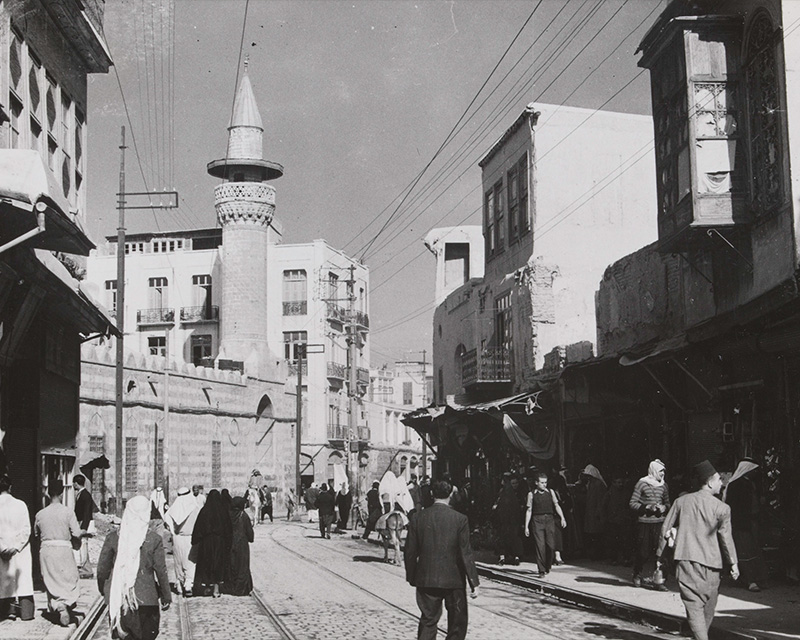
Levant Crisis
31 May 1945
At the end of May, events in the Eastern Mediterranean demonstrated that the peace would be anything but straightforward.
In Damascus, Syria – technically still part of a French mandate known as the Levant States – French troops killed over 1,000 civilians while attempting to quell nationalist protests.
On 31 May, the British government, hoping to appease local powers and retain their own access to natural resources in the region, threatened to send troops from Transjordan (now Jordan) to Syria with orders to fire on French troops if necessary.
On This Day: 1945
This is the fifth instalment of a series exploring the British Army's role in 1945 – one of the most decisive years in modern history – drawing upon the National Army Museum's vast collection of objects, photographs and personal testimonies.
Throughout 2025, a new instalment will be released each month that focuses on events from 80 years beforehand. The series will highlight the everyday experiences of Britain’s soldiers alongside events of grand historical significance.

